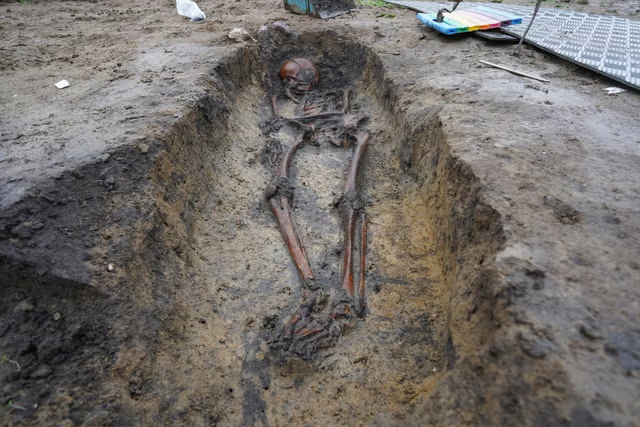Archaeologists have revealed thousands of previously unknown ancient Maya structures in southeast Mexico, including an entire hidden city with impressive pyramids, a study reports.
Many of the more than 6,600 structures identified by a study are located close to modern settlements, despite being unknown to the Mexican government and the scientific community.
The research, published in the journal Antiquity, involved an analysis of LiDAR data covering parts of Campeche state—an understudied corner of the Maya world. LiDAR, or light detection and ranging, is a remote sensing technique that can reveal hidden archaeological features in a landscape. The study supports the notion of a "populous and urban ancient Maya landscape" in the examined area.
Furthermore, the results suggest that much more evidence of urbanism is waiting to be discovered in the central Maya Lowlands—a region in the southern part of the Yucatán Peninsula, encompassing parts of present-day Guatemala, Belize and the Mexican states of Campeche and Quintana Roo. This area, characterized by its tropical forests, limestone plains and seasonal wetlands, was a core hub of the ancient Maya civilization, particularly during the Classic Period (A.D. 250 to 900).
"Our analysis not only revealed a picture of a region that was dense with settlements, but it also revealed a lot of variability," study lead author Luke Auld-Thomas of Northern Arizona University said in a press release.
"We didn't just find rural areas and smaller settlements," he continued. "We also found a large city with pyramids right next to the area's only highway, near a town where people have been actively farming among the ruins for years. The government never knew about it; the scientific community never knew about it. That really puts an exclamation point behind the statement that, no, we have not found everything, and yes, there's a lot more to be discovered."
Since at least the 1940s, archaeologists have known that the Classic period Maya transformed the rugged interior of the Mexican state of Campeche into a densely settled and extensively engineered landscape. But some areas, such as east-central Campeche, have received little attention from archaeologists, compared with other parts of the Maya Lowlands.
For the latest study, Auld-Thomas decided to focus on this "blank spot" in east-central Campeche. The team analyzed LiDAR data for a roughly 50-mile-square area of eastern Campeche that had never been examined by archaeologists before. The data had been collected by a consortium in 2013 for a different purpose: measuring and monitoring carbon in Mexico's forests.
"Scientists in ecology, forestry and civil engineering have been using LiDAR surveys to study some of these areas for totally separate purposes," Auld-Thomas said in the press release.
In recent years, LiDAR has emerged as a powerful tool in archaeologists' arsenal, capable of documenting entire landscapes in minute detail even under dense forest cover.
LIDAR involves the use of laser pulses fired at the ground—usually from an aircraft—to generate 3D models of a given landscape. This method can map the topography of the land while also revealing hidden man-made features that would be challenging to detect through traditional fieldwork or satellite imagery alone.
LiDAR is particularly useful for surveying dense tropical forests, such as the Maya Lowlands, where thick vegetation can obscure ancient ruins, helping researchers to "see through" the canopy.
The latest study revealed a dense and diverse array of previously unknown Maya settlements dotted across the region, including an entire city, which the researchers call Valeriana. This "major urban area" encompasses two major hubs of monumental architecture more than a mile apart, linked by continuous dense settlement and evidence of landscape engineering.
The larger of Valeriana's two monumental precincts has "all the hallmarks" of a Classic Maya political capital, according to the study. These features include multiple enclosed plazas connected by a broad causeway, temple pyramids, a ball court and a reservoir formed by damming an arroyo (a dry creek bed or gully that temporarily fills with water after heavy rainfall or flash floods), among other characteristics.
The available evidence suggests that the settled area associated with the city even continues beyond the area covered by the LiDAR dataset.
"The discovery of Valeriana highlights the fact that there are still major gaps in our knowledge of the existence or absence of large sites within as-yet unmapped areas of the Maya Lowlands," the authors wrote in the study.
The authors said that when the latest findings are taken into account with the current understanding of the Maya in this region, they can "only conclude that cities and dense settlement are simply ubiquitous across large swaths of the central Maya Lowlands."
Do you have a tip on a science story that Newsweek should be covering? Do you have a question about archaeology? Let us know via science@newsweek.com.
Disclaimer: The copyright of this article belongs to the original author. Reposting this article is solely for the purpose of information dissemination and does not constitute any investment advice. If there is any infringement, please contact us immediately. We will make corrections or deletions as necessary. Thank you.



